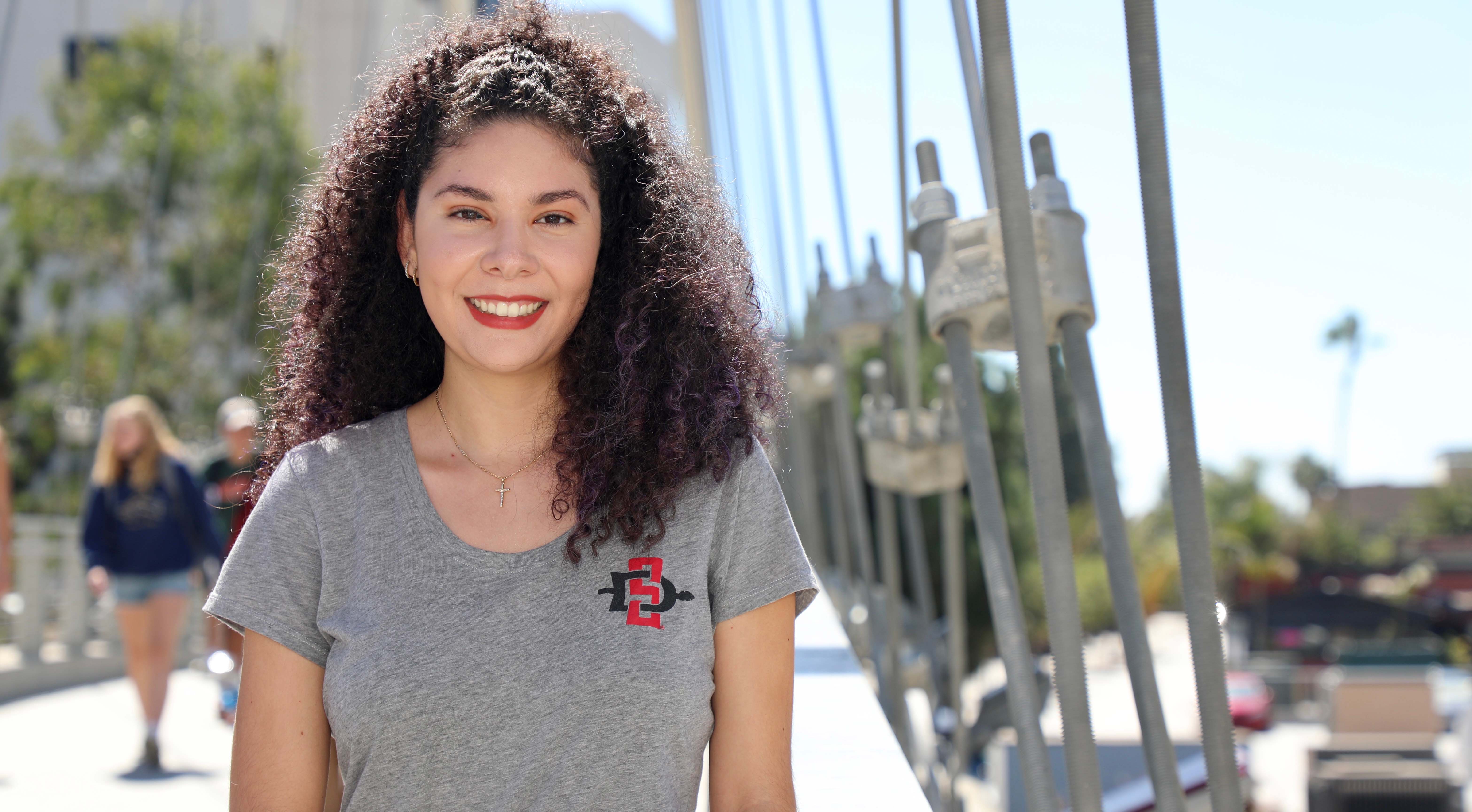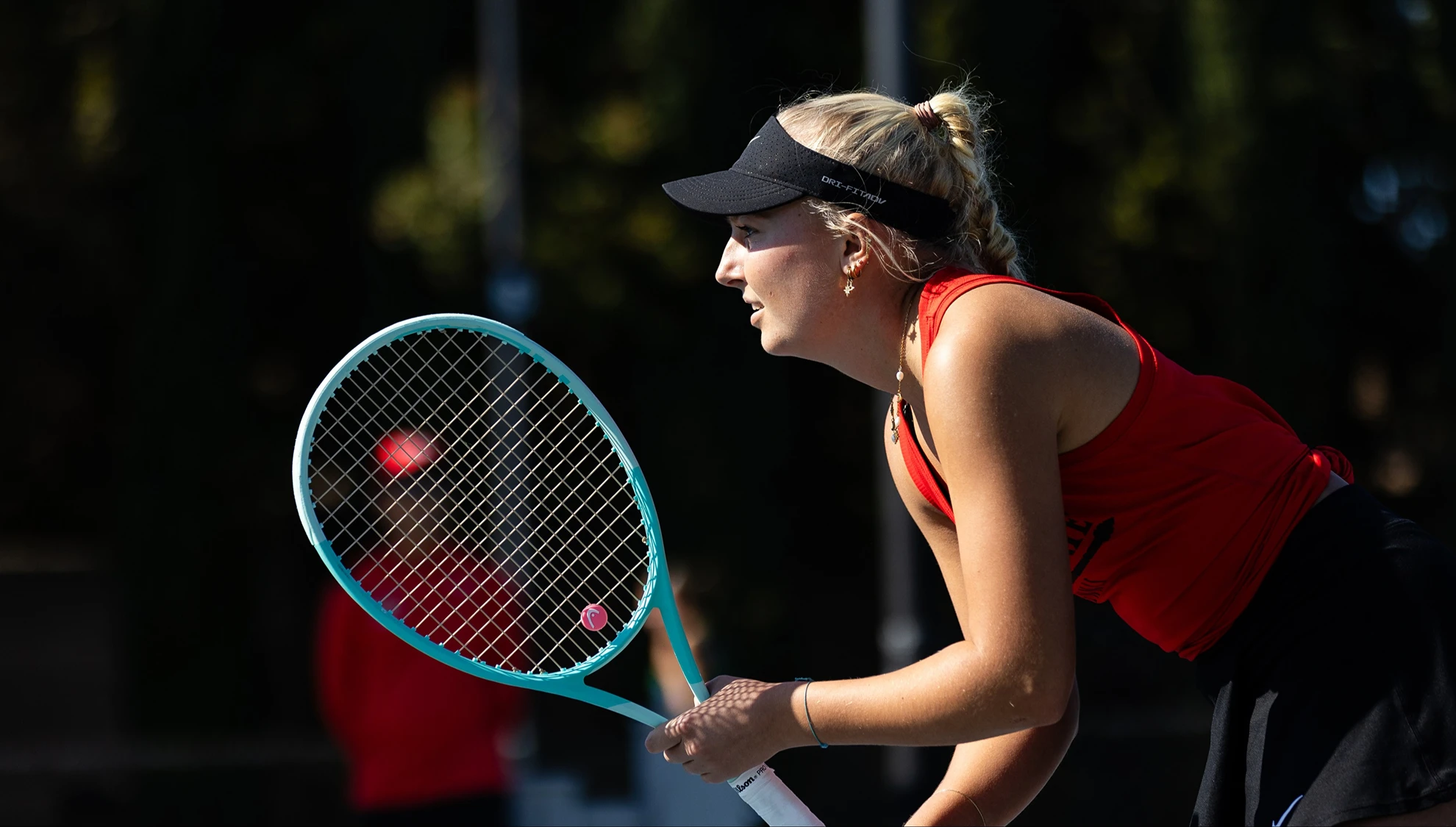Engineering Her Future
The recipient of a CSU endowed scholarship wants to help younger women break the gender and cultural stereotypes she has already started to overcome.

“My mother always instilled in me to work hard and aspire to do great things, but also reach out and help the community around me.”
Nicole Hurtado-Savin was already interested in math and science as a high school student when she took what proved to be a consequential road trip to the Bay Area for a couple of college tours.
The trip allowed for a firsthand look at two marvels of ‘30s-era engineering in California — the San Francisco-Oakland Bay Bridge and the Golden Gate Bridge — “these enormous monuments,” as the now-senior at San Diego State University puts it.
Designing bridges — that’s something a civil engineer does, she remembers thinking, picturing how the job integrates with transportation and the freeway system.
“That’s what first got me into it,” Hurtado-Savin said.
Hurtado-Savin, who started at SDSU in 2018 and is on track to graduate in May with a B.S. degree in civil engineering, is completing her studies with assistance from a Howard C. Christiansen Endowed Scholarship from California State University.
The $6,000, need-based award, announced earlier this month, is bestowed annually upon four engineering students statewide who show superior academic performance. Hurtado-Savin has already dedicated it to paying off student loans.
Thelma Chavez, a coordinator of three initiatives that help underrepresented minorities succeed at SDSU, said she noticed Hurtado-Savin’s dedication and hard work in a five-week program she participated in the summer before her first year. Hurtado-Savin finished at the very top of the CSU Louis Stokes Alliance for Minority Participation (CSU-LSAMP) program, composed of 20 or more mostly male STEM students.
“Even first meeting her, I knew this is a girl who’s going to go places and do things,” said Chavez, who became a mentor to the student. “Every semester after she just improved and did more.”
As Hurtado-Savin’s memory of her Bay Area trip shows, it’s easy to start internalizing what she has learned about engineering. A recent visit to Santa Barbara had her thinking about the construction of a pier she passed beneath. On campus, she notices whether a pillar added to the Engineering building after its original construction is load-bearing or decorative, and how arches function on other structures.
Hurtado-Savin grew up in El Cajon, raised with two older siblings by a single mom who immigrated to California from the industrial port city of Guaymas in Sonora, Mexico. At Valhalla High, she first learned the satisfaction of helping younger students in Link Crew, a high school leadership program.
More importantly, though, it’s where she took notice of civil engineering as a career, intrigued with the idea of a job that helps solve real-world issues. One influence was childhood trips to her mother’s home country and seeing differences in the infrastructure.
“My biggest interest in transportation was being able to connect communities,” she said. “I’ve had a really big interest in new technologies, and smart vehicles, and how we can contribute more to (mitigating) climate change. Connecting people and creating safer options and more efficient options for them to get home to their loved ones.”
“My mother always instilled in me to work hard and aspire to do great things, but also reach out and help the community around me,” she added. “I strive to lift others up the ladder as I have been lifted by others before me.”
Critical support
At SDSU, she credits two programs aimed at helping underrepresented minorities for providing critical support: CSU-LSAMP and the MESA (Mathematics, Engineering, Science Achievement) program.
“They’ve really given me all the tools that you really wouldn’t know about as a first-generation (student),” she said. They also helped her strengthen her networking, “putting myself out there and just applying and seeing if there is an opportunity.”
She also became a student assistant in the College of Engineering’s Femineer program, which seeks to spark interest in STEM fields among girls in K-12 schools, and Chavez said Hurtado-Savin is a reliable volunteer to speak to younger students in STEM at SDSU.
“She feels it’s really important to share her experience to encourage others, especially Latinas in STEM,” Chavez said.
When she was growing up, “I was definitely that girl that played with toy cars and I didn’t see the obstacles for me as a female pursuing STEM,” Hurtado-Savin said. But even in 2021, she found girls back at her high school who see limits to their careers because they don’t feel skilled at math or science.
Interacting with the mostly middle- and high school-age children “was an awesome experience,” she said, “letting them know that they can do whatever they set their minds to, seeing their faces just light up at the possibilities.”
Prior to graduation, Hurtado-Savin expects to pass the Fundamentals of Engineering (FE) exam, the first step to becoming a professional licensed engineer and working up to a position in project management. She already has a job lined up at Kimley-Horn and Associates, an engineering consulting firm, where she interned last summer and is currently working part-time with its roadway team.



